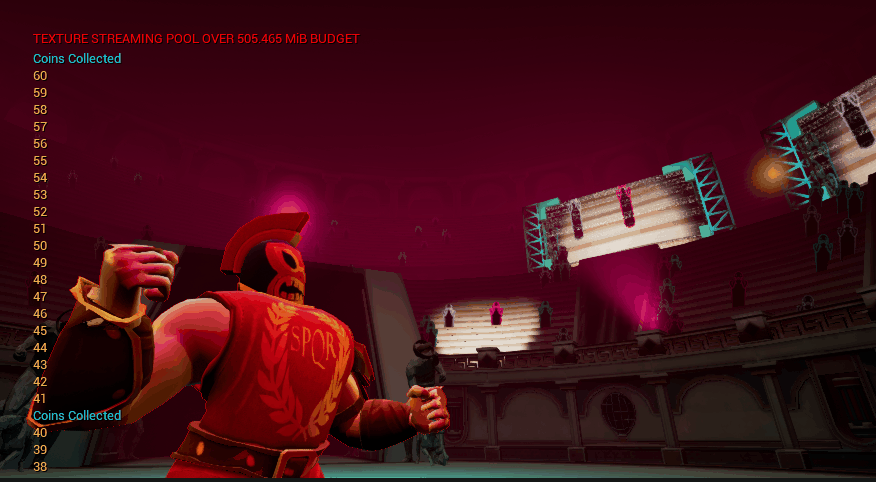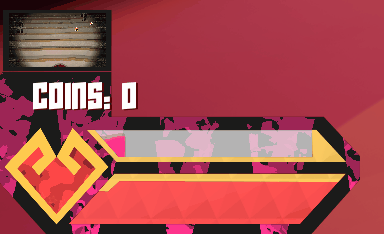

Overview
Roman Rumble is my final university project, which I’ve been producing and designing alongside a team of eight talented developers, our team name is E-Motion Studios. It's our first time developing in Unreal Engine, and our goal is to create a third-person action game that blends the spectacle of wrestling with the brutal drama of Roman gladiator combat. We’re aiming for a public release in late-October.
We’ve also had the incredible opportunity to be mentored by PlaySide Studios, whose guidance and industry experience have been invaluable in shaping our development process. As the producer, it’s been a privilege to work with such a passionate and dedicated team, everyone has brought their best, and I genuinely couldn’t ask for a better group to work with.
This project has given me the chance to put my design skills into practice in new ways, which I’ll reflect on in more detail below.
Contributions
Producer and Lead Designer, overseeing creative direction and production workflow.
Designed and implemented UI, VFX, and game “juice” to enhance player feedback and engagement.
Utilised Unreal Engine’s Niagara system and UMG widgets to achieve a high standard of visuals and interface design.
Screenshots




Outcomes
I’ve learnt a lot from this project.
As a Producer, it taught me the importance of breaking down large goals into clear, manageable tasks and effectively assigning responsibilities to the right people. I also discovered better ways to make peer-to-peer feedback more engaging, constructive, and personalised, helping the team stay motivated while improving the overall quality of our work.
As a Designer, I learned the value of establishing the core gameplay loop early, then expanding it through the project’s design pillars to shape the moment-to-moment experience. I also gained a stronger understanding of how to deconstruct features so other disciplines could easily follow the flow of interactions and see how their work connected to the final vision.
Since this was my first Unreal Engine project, adapting my Unity experience to a new workflow took time. However, after some trial and error, I established an efficient development pipeline for both VFX and UI implementation, which greatly streamlined production.
This was also my first published project, and it gave me firsthand insight into the challenges of managing deadlines and the Steam release process. Perhaps most importantly, I came to appreciate how vital game visibility, virality, and social media marketing are for a project’s success beyond development.
Process
This project was developed for QUT’s IGB300 Capstone unit, with PlaySide Studios as our industry partner. The brief only required us to use Unreal Engine 5, giving our team full creative freedom while receiving mentorship from PlaySide’s industry professionals throughout development.
Roman Rumble is a third-person action game that embraces over-the-top, goofy combat. The player’s goal is to defeat five waves of enemies and face an intentionally anticlimactic final boss battle, all built around one simple aim: to have fun.
The core objectives of the project were to experience the full production cycle, from pre-production to release, while publishing a playable build on Steam and participating in Steam Next Fest (October). We also wanted to experiment with Unreal Engine 5 as an industry-standard tool, learning its workflows and challenges firsthand.
Since Unity was the primary engine taught at QUT, we saw this as a valuable opportunity to expand our technical versatility and develop portfolios that demonstrate flexibility across both engines. This experience, we hope, will give us a competitive edge in an already demanding job market.
Play Around!
Go check it out!
Just Some Stats
Heading 6
Title
What I've Learned
Learning about tech art and polish in Unreal Engine 5
One of the hats I wore during development was that of a VFX artist. Drawing on my previous experience with Unity’s Shader Graph and VFX Graph, I found the transition to Unreal Engine’s Niagara System and custom material shaders to be fairly straightforward. Throughout the project, I dedicated countless hours to researching, experimenting, and fine-tuning the game’s visual polish to achieve the right level of style and impact. My work covered a wide range of effects, from dynamic particle simulations and reactive skeletal mesh effects to interactive UI materials and post-processing treatments that helped unify the game’s visual identity. You can see a selection of these effects showcased below.

Lighting In Unreal Engine 5
Throughout development, the scene lighting underwent multiple iterations as new elements were introduced and feedback was gathered. Lighting played a much broader role than simply blending spotlights with fog colours to capture the atmosphere of a modern midnight arena show, it also served as a key tool for enhancing player experience and readability. Emissive materials were used strategically to reflect the energy of the crowd, highlight in-game events, and draw attention to power-ups during gameplay. Each iteration involved fine-tuning Unreal Engine’s extensive lighting parameters, addressing visual clarity challenges, and balancing aesthetics with performance and gameplay visibility.

This project was the largest I’ve ever been a part of. At the start, my primary roles were Producer and Game Designer, but as development progressed, I took on additional responsibilities to help fill knowledge gaps within the team. This allowed others to focus on their strengths while I supported broader areas of development. Thanks to my experience across multiple disciplines, I became responsible for UI design, VFX and visual polish, and sound implementation. Since it was my first time managing all three in Unreal Engine, I approached the process with an open mind, diving deep into research and documentation (or the lack thereof). My goal was to build a broad understanding of Unreal’s systems, not only to deliver results but also to strengthen my ability as a game designer to communicate ideas effectively and visualise final features with greater clarity.

Some Documentation
Contacts:

Senior Lecturer
Dr. Cody Phillips
Email me for their contact information.










